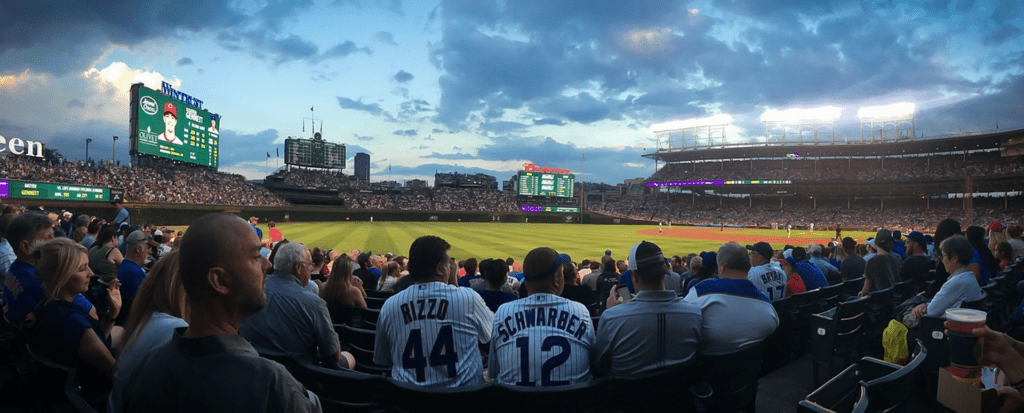The Chicago Cubs have positioned themselves as one of the most consistent teams in the National League through the first half of the 2025 season. But consistency doesn’t tell the whole story. There are clear patterns in when the Cubs play their best baseball and when they don’t.
What specific situations bring out their strongest form? Is it tied to certain matchups, lineup stability, or in-game conditions? Do they perform better with leads, under pressure, or when playing at home? And what does that say about how they’re built?
Identifying those trends now could offer a clearer picture of what to expect as the season moves into its second half.
When the Game Is Close
In 2025, the Cubs have shown more poise in tight situations than in recent seasons. They hold a 5–4 record in one-run games during June and have already collected several comeback wins. These results reflect a more composed and better-managed team in high-pressure moments.
One standout example came when Ian Happ delivered a walk-off hit against the Pirates. Offensively, players like Kyle Tucker and Seiya Suzuki have consistently delivered in high-leverage spots, especially with runners in scoring positions. Manager Craig Counsell has also played a key role, staying calm in the dugout and managing bullpen matchups, pinch hitters, and defensive substitutions with precision.
The ability to execute under pressure has made a difference. In a division race, the teams that consistently win tight games tend to stay in contention longer and finish stronger. That kind of late-game performance isn’t just important on the field. It also matters for anyone tracking Cubs Season bets, as close-game results can swing win totals, playoff odds, and division standings.
When the Offense Scores Early
One of the clearest indicators of success for the Cubs this season has been their ability to score early. Their win percentage increases significantly when they put runs on the board in the first three innings. This early production sets the tone and gives their pitching staff more flexibility.
With a lead in hand, Cubs starters can pitch more aggressively, knowing they have some margin for error. Opposing pitchers are forced into longer innings, higher pitch counts, and uncomfortable situations earlier in the game, often forcing managers to go to their bullpen sooner than planned.
The Cubs’ lineup is built to strike early. Pete Crow-Armstrong has stepped into the leadoff role with impact. He’s already hit 19 home runs, creating early scoring opportunities. Following him, Nico Hoerner brings a high-contact, low-strikeout approach that wears pitchers down and keeps innings alive. Seiya Suzuki and Kyle Tucker have also provided reliable production, combining for over 100 RBI and more than 30 home runs by midseason.
When this group clicks in the first two innings, the Cubs often build multi-run leads, and from there, the rest of the game tilts in their favor.
When They’re Playing at Wrigley
The Cubs have been a better team at home. They hold a 24–12 record at Wrigley Field, compared to 21–16 on the road. Their +41 run differential at home is a significant part of their league-leading mark of +107. That kind of advantage shows up across the board.
Starting pitchers tend to go deeper into games at Wrigley, giving the bullpen more rest. Defensively, the team is more efficient, especially in the infield, where they’ve cut down on errors in tight games. Offensively, hitters like Michael Busch and Dansby Swanson post better power numbers at home. Busch’s OPS, in particular, trends higher at Wrigley, and Swanson has shown more comfort and discipline at the plate in front of the home crowd.
The Cubs play sharper baseball at home, whether it’s the routine, the atmosphere, or better matchup control. Their win percentage at Wrigley is among the best in the National League. If they hold their position in the standings, home-field advantage could become a significant factor in October.
When the Lineup Is Healthy and Balanced
The Cubs’ offense is at its best when the full lineup is available. Pete Crow-Armstrong, Nico Hoerner, Seiya Suzuki, Kyle Tucker, and Michael Busch lead a top half that can score in multiple ways. Dansby Swanson adds power from the lower third, while Yan Gomes and Nick Madrigal contribute with situational hitting. When this group plays together consistently, the Cubs score five or more runs per game.
Help is also coming on the pitching side. Shōta Imanaga, Porter Hodge, and Eli Morgan are nearly returning from injuries. Their return would strengthen the rotation and bullpen, giving the team more flexibility and depth. If the roster stays healthy, the Cubs are built to keep winning. For more updates on how lineup stability and other factors affect team performance, follow FanDuel’s Latest MLB Game Insights.
The Cubs’ Winning Formula
The Cubs have shown a clear pattern for when they perform at their best. They win more often when they score early, play at home, keep their lineup healthy, and maintain structure in their pitching staff. They’ve handled close games better than in past seasons and have responded well to pressure. If the Cubs stick to what has made them successful, they’ll stay competitive in the division and have a solid chance to carry that success into the postseason.


 Steven Alfonso – Senior Gambling Analyst
Steven Alfonso serves as the Senior Gambling Analyst at Gamble Wise Roll, bringing a wealth of industry knowledge and analytical expertise to the platform. With a background in gaming economics and market research, Steven delves into the latest trends shaping the gambling world, from emerging skill-based betting opportunities to regulatory shifts and technological advancements. His in-depth reports provide a comprehensive look at how the industry is evolving, offering valuable insights for both casual players and seasoned professionals. Passionate about data-driven decision-making, Steven ensures that Gamble Wise Roll remains at the forefront of industry analysis, helping readers understand the risks, opportunities, and strategies that define modern gambling.
Steven Alfonso – Senior Gambling Analyst
Steven Alfonso serves as the Senior Gambling Analyst at Gamble Wise Roll, bringing a wealth of industry knowledge and analytical expertise to the platform. With a background in gaming economics and market research, Steven delves into the latest trends shaping the gambling world, from emerging skill-based betting opportunities to regulatory shifts and technological advancements. His in-depth reports provide a comprehensive look at how the industry is evolving, offering valuable insights for both casual players and seasoned professionals. Passionate about data-driven decision-making, Steven ensures that Gamble Wise Roll remains at the forefront of industry analysis, helping readers understand the risks, opportunities, and strategies that define modern gambling.
